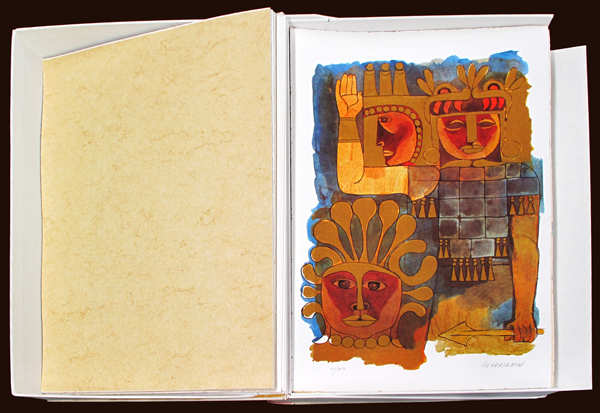Guayasamín creates an image of colorful, proud, and elaborately dressed warriors from the Tawantinsuyu (the Quechua word for the area encompassed by the Incan empire at the height of its reign). They stand straight and firm, recalling the powerful geometric forms of Pre-Columbian art and architecture. Strong and timeless, Guayasamín's stoic warriors may be likened to Inca temples themselves. Each figure holds a bow and arrow, and a decapitated head is depicted in the top left corner of the image. Guayasamín may have been inspired by historical accounts of great Inca warriors from Ecuador's past, such as Rumiñahui, who fought against the Spanish conquistadors. Rumiñahui, translated from Quechuan, literally means "face of stone," a nickname given in honor of his firm stance in the 1534 battle against the Spanish at Mount Chimborazo.
 |
